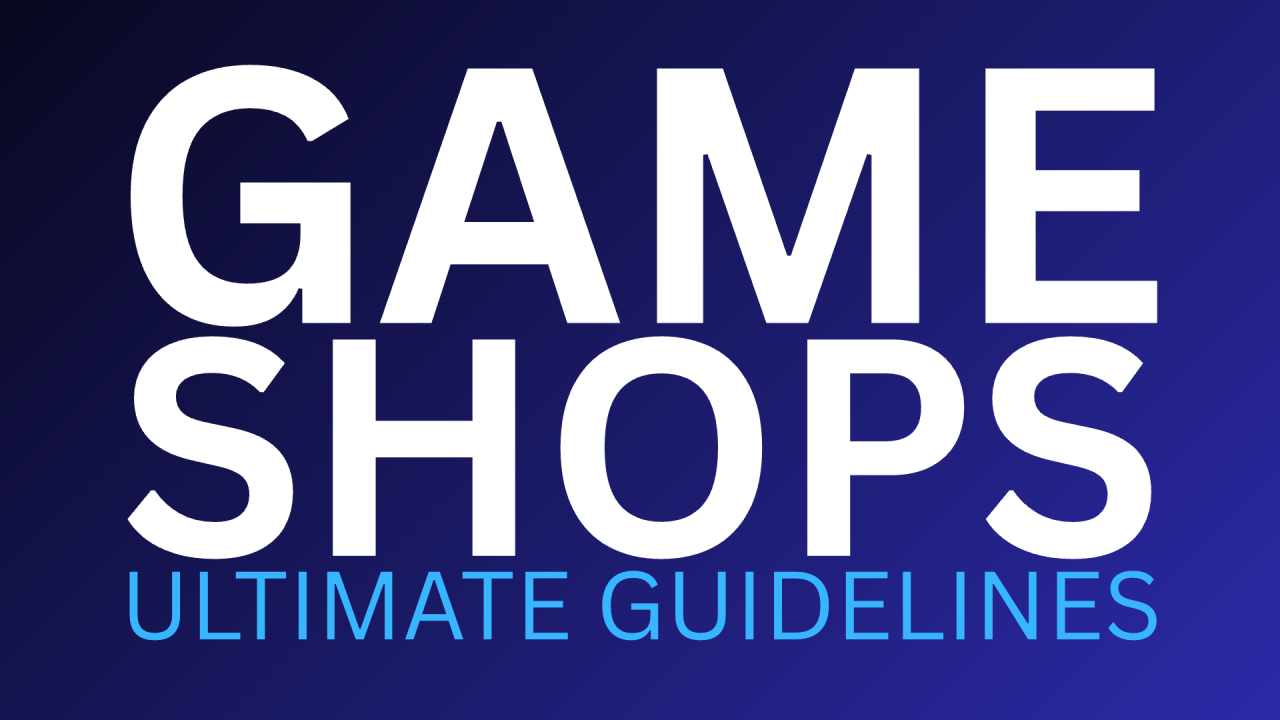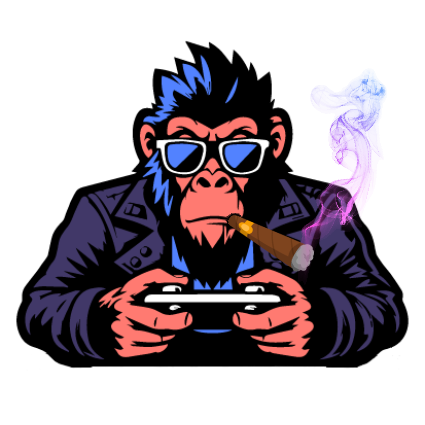
Evolution of In‑Game Shops in Mobile F2P Games
Journal 16 Michael Khripin May 15

This is a chapter from my upcoming book “Game Shops. Ultimate Guidelines”. Follow and subscribe, so you will not miss future updates.
…but first, let’s take a look at the history of in-game shops in mobile games. Not so distant, but starting from smartphones.
Early Pioneers (2009–2011)
The era of free-to-play mobile gaming began in late 2009 when Apple first allowed in-app purchases in free iOS apps, opening the door for monetized in-game shops. Early pioneers quickly experimented with selling virtual goods.
For example, Tap Tap Revenge 3 (Oct 2009) initially launched as a paid app (due to Apple’s old rules) but soon went free, letting players buy song packs and avatar items via an in-game store. Similarly, Eliminate Pro(2009) introduced a “freemium” model where energy for matches could be refilled by purchasing “power cells” in its shop.
By 2010, fully free apps with shops took off – ngmoco’s We Rule (Mar 2010) is a prime example. We Rule let players build a cartoon kingdom and was free to download, but its “Mojo” currency (to speed up crops and construction) drove it to become the top-grossing free game by April 2010. Capcom’s Smurfs’ Village (Nov 2010) similarly offered a colorful farm/village sim where “Smurfberries”could be bought to accelerate progress – a design so effective that it infamously led children to rack up bills on their parents’ iTunes accounts.
These early titles established the template: a core free game loop (be it rhythm tapping, shooting, or farming) supplemented by an in-game shop selling either content or time-savers for real money. Notably, the user interface (UI) of these first-gen shops was simple – often just a basic list of currency packs or items. Yet, even with humble UIs, the concept proved successful. We Rule, for instance, showed that players would spend “a little money to help their crops grow faster and buildings be completed quicker,” as one review noted.
This period also saw Android’s entry; by 2011, Google Play enabled in-app billing, allowing F2P shops to spread on Android as well. The momentum was undeniable – by the end of 2011, free-to-play had firmly taken root, with titles like Tiny Tower (2011) monetizing via “Tower Bux” for speeding up tower construction, and Temple Run (2011) famously switching from paid to free, quadrupling its revenue once it relied on in-app purchases.

Rise of Freemium Hits and Gacha (2012–2014)
The 2012–2014 period witnessed an explosion of top-grossing F2P hits and significant evolution in shop design and monetization mechanics. Two landmark games of 2012 – Candy Crush Saga and Puzzle & Dragons– demonstrated the power of new monetization models.
Candy Crush Saga (King, 2012) brought the “saga” model from Facebook to smartphones, monetizing through boosters and extra lives. Its in-game shop wasn’t a traditional storefront with dozens of items, but rather a contextual system: when players ran out of lives or needed power-ups, the game prompted them to buy more moves or lives(or ask friends). This seamless integration of the “shop” into gameplay UI was a shift in UX – purchasing felt like a natural extension of play.
Meanwhile in Japan, GungHo’s Puzzle & Dragons (P&D) introduced the West to the gacha mechanic on mobile. In P&D, players could collect rare monsters by spending premium currency (Magic Stones) in an in-game “Egg Machine” – essentially a slot-machine style lottery for characters. This randomized monetization (akin to card pack purchases) proved immensely addictive. Both Candy Crush and P&D achieved unprecedented revenue levels for mobile games and became templates for freemium design going forward. In fact, industry observers noted that these games “generated revenue numbers previously unseen in the mobile game sector” and established a new standard for freemium success.
During this era, in-game shop interfaces grew more sophisticated to accommodate new content types. Many games started featuring multi-tab shops: one tab for buying hard currency (gems, coins, etc.), another for special items or packs, and sometimes a “gacha” interfacewith its own unique presentation (e.g. a roulette wheel or an animation of a chest opening).
For instance, by 2013, Clash of Clans (Supercell, launched mid-2012) had a shop where players bought gems packages (from $0.99 up to $99) and spent those gems within the game to speed up builds or purchase resources. Clash of Clans’ design demonstrated a clean two-currency economy– soft currencies (gold/elixir) for gameplay and a premium currency (gems) purchasable with real money. Notably, Supercell’s approach to shop UX was minimalist and focused: the gem store was accessible via a simple button, and prices in real money were only shown at the point of purchase (to keep the immersion on in-game currency).
Elsewhere, Glu Mobile’s titles like Gun Bros and Deer Hunter(2010–2013) pioneered the now-common practice of dual currencies and item catalogs – their stores sold both cosmetic gear and power items, often with prominent “SALE” tags and limited-time offers even in those early days.
By 2014, the gacha model had spread beyond P&D: games like Brave Frontier and Summoners War (global releases in 2014) featured summon shops where flashy animations revealed rare characters, reinforcing how shop design was becoming an experience in itself. Importantly, developers also began recognizing the psychological aspects of shop presentation. For example, pricing tiers were structured to entice bigger purchases (the “best value” $19.99 bundle highlighted, etc.), and UI elements like red badges or timerswere used to convey urgency.
Overall, the early 2010s established several key monetization mechanics – energy refills (Candy Crush), gacha draws (P&D), speed-up currencies (Clash of Clans) – each supported by evolving shop interfaces that taught players to comfortably spend in a mobile game.

Design Evolution and UX Innovations (2015–2017)
As free-to-play matured, in-game shops underwent thoughtful redesigns to improve user experience and boost monetization. One notable trend mid-decade was the rise of the “featured offer” and limited-time bundle.
Games moved beyond static stores and began presenting dynamic deals – for instance, a special $4.99 starter pack that appears only during a player’s first days, or a holiday bundle available for a week. By creating time-limited offers, developers added urgency and FOMO to the shopping experience.
We can see this in Game of War: Fire Age and Mobile Strike (2014–2016) which became infamous for their rotating $99.99 mega-packs and constant “sale” banners. While those UIs were often cluttered with flashing icons, they were effective at targeting spenders. In contrast, Supercell’s games during this period (Clash of Clans, Clash Royale in 2016) took a more streamlined UI approach – for example, Clash Royale’s shop would show at most 6 items on screen (rotating daily cards, a couple of chests, and currency packs), sticking to a clean aesthetic to not overwhelm the user. This highlights a divergence in design philosophy: some developers went for maximalist, attention-grabbing shops with pop-ups and timers, while others (like Supercell) kept shops minimalist to build long-term trust with players.
Another major evolution was personalization and segmentation. By 2016–2017, top-grossing games started tailoring in-game store offers to player behavior. For example, a player stuck on a level might be shown a “recommended pack” containing boosters to overcome it, or lapsed players might return to find a one-time discount on a bundle. Industry reports around that time noted that personalized offershad become a best practice, leveraging data to present the right deal at the right time. From a UX standpoint, this meant the shop was no longer a one-size-fits-all menu, but often a dynamic component of the UI that could change for each user.
Seasonal events also became deeply integrated with shop content. Games introduced seasonal currencies and event stores – e.g. a Halloween event where players earn pumpkins that can be spent in a limited Halloween shop. This not only diversified the types of in-game shops (some shops would only be accessible during events), but also linked the visual design of shops to game lore and seasons (snowy themes for winter, etc.). According to game marketing analyses, seasonal in-game events drive engagement and spending by offering exclusive themed items for a short window. Indeed, titles like Overwatch (2016) on PC/console popularized this idea, and mobile followed suit with games such as Fire Emblem Heroes (Nintendo, 2017) running seasonal banners in its gacha shop, and Pokémon GO (2016) selling limited boxes during events.
By 2017, the conversation around monetization also had to address loot box regulations and transparency. Both Apple and Google updated their policies to require disclosure of odds for any random-chance loot boxes in apps. This led to subtle UI changes in gacha-style shops: many games added an “i” info button or a drop-rate table in the shop interface to comply with these rules (for example, Heroes of the Stormon mobile showed % chances for each reward rarity in its crates after 2017).
In summary, the mid-decade phase saw in-game shops become richer and smarter – richer in terms of visual appeal (animated pack openings, thematic design) and smarter in terms of targeting (personalized offers, time-limited deals). The core monetization strategies (selling currency, gacha pulls, cosmetics, etc.) persisted, but the presentation and delivery of those sales grew far more refined compared to the early 2010s.
Modern Era: Cosmetics, Battle Passes, and Cross-Platform Shops (2018–2025)
In the most recent years, mobile in-game shops have converged with broader gaming trends, emphasizing cosmetics and season-pass systems while further streamlining the purchasing UX. A pivotal title in this shift was Fortnite (2018 mobile release). Fortnite’s item shop (shared across platforms) eschewed pay-to-win items entirely – it sells only cosmetic skins, dances (emotes), and costumes. The shop refreshes daily with a rotating catalog of outfits, creating a cadence where players check back often to see new cosmetics. This model proved that scarcity and cosmeticscan drive revenue without affecting competitive balance.
The influence on mobile design was immediate: games like PUBG Mobile (2018) and Call of Duty: Mobile(2019) adopted similar approaches, introducing cosmetic crates and skins stores. The UI for these cosmetic shops tends to highlight 3D character models or previews – for example, PUBG Mobile’s shop lets you preview a character skin on your avatar before purchase, a level of visual fidelity rarely seen in 2012-era shops.
Additionally, the Battle Pass (a seasonal progression system first popularized by Fortnite) has become a staple monetization feature even in mobile titles. Games such as Clash of Clans (with its Gold Pass introduced in 2019) and Candy Crush (adding a Season Pass in later updates) now offer these passes which effectively act as a time-limited shop item (you pay a fixed price for a bundle of rewards earned through play). The inclusion of battle passes is often integrated into the shop UI or main menu, using bright banners to entice players. This represents a UX trend of blending what is effectively a subscription-like purchase into the game’s progression screen rather than a separate store page.
Another hallmark of the modern era is the polish and user-friendliness of the purchase flow. Mobile platforms by 2025 have one-tap payments (e.g. Apple’s Face ID confirmation or Google’s saved card payments), making the act of buying from an in-game shop incredibly frictionless. Developers capitalize on this by placing subtle “+” buttons next to currencies or shop shortcuts on the main HUD. For instance, in contemporary gacha RPGs like Genshin Impact (2020), the premium currency indicator on the screen is clickable, instantly opening the top-up shop – a far cry from early games where one had to navigate through menus to find the store. Likewise, modern UIs frequently include a daily free rewardclaim in the shop (to train players to visit the store regularly even if they’re not spenders).
The visual design of shops has also kept pace with high-resolution screens: compare a 2010 shop’s simple icons to a 2023 shop which might have animated item cards, video previews (for a new skin’s animations), and rich color coding for item rarity. Despite these flashier visuals, modern shop layouts are careful to remain accessible. They often follow a tile-based design (grid of item cards) or a carousel of featured offers, ensuring that even with dozens of offerings, the player isn’t overwhelmed on one screen.
Monetization strategies today often mix and match all previous innovations. A single successful mobile game in 2025 might have: a rotating cosmetic shop, a gacha mechanic for special characters, a battle pass, and occasional limited-time sales – all coexisting. For example, Marvel Snap (2022) combines a season pass, a rotating cosmetic shop, and “nexus events” (loot box mechanics) in one title. The key for developers has been to integrate these elements elegantly. Personalization has gone even further with AI-driven recommendation systems starting to suggest bundles tuned to a player’s profile (e.g. offering a beginner a one-time booster pack if they struggle, whereas offering a veteran a high-end cosmetic).
In essence, the in-game shop has evolved from a basic menu into a dynamic, multifaceted marketplace that is central to the game’s experience. Major franchises like Clash of Clans, Candy Crush, and Puzzle & Dragonseach left lasting influences – Clash of Clans showed the long-term viability of fair F2P economies with minimal gimmicks, Candy Crush proved the mass-market appeal of energy mechanics and upsell prompts, and Puzzle & Dragons introduced gacha’s thrill to developers worldwide. Building on these foundations, today’s mobile games have refined in-game shops into something that’s not only a revenue driver but also part of the fun (e.g. the excitement of opening a loot box or getting a rare skin can be as enjoyable as gameplay).
The timeline below summarizes key milestones in this evolution, illustrating how a concept that began in 2009 with simple coin packs has blossomed into the sophisticated, player-centric storefronts of modern mobile games.
Timeline of Notable Milestones
- 2009 – Apple enables in-app purchases in free apps (Oct 2009), igniting mobile F2P. Tap Tap Revenge 3 and Eliminate Pro debut in-game shops for songs and power-ups.
- 2010 – We Rule (ngmoco) popularizes the free city-builder with a premium currency shop, becoming April’s top-grossing free game. Smurfs’ Village launches, selling Smurfberries for accelerations. Apple’s App Store warns parents of in-app purchases as kids drive up bills.
- 2011 – Tiny Tower demonstrates successful microtransactions in a casual sim. Temple Run switches from $0.99 to free with IAP, and its revenue more than quadruples, topping charts. Android Market (Google Play) also embraces in-app billing, expanding the F2P model.
- 2012 – Breakout year for F2P: Candy Crush Saga (King) and Puzzle & Dragons (GungHo) launch. Candy Crush’s in-game shop sells lives/boosters, blending seamlessly with gameplay, while Puzzle & Dragons introduces the gacha “Egg Machine” for rare monsters. Clash of Clans (Supercell) debuts a polished base-building shop selling gem packs up to $99.99, setting new standards for revenue and player retention.
- 2013–2014 – Rise of mid-core and gacha worldwide. Puzzle & Dragons and Supercell’s titles each reportedly gross over $1 billion/year, proving the shop-driven model’s profitability. Many games add dual-currency stores, energy refills, and loot chests. UI improvements like tabs, confirmation dialogs, and limited-time sale banners become common. Apple (2013) and Google (2014) begin featuring top grossing charts, highlighting F2P dominance.
- 2015 – The concept of the limited-time event store gains traction. Games like Clash of Kings and Candy Crush run holiday events with special in-game shops for event currencies. Mobile MOBAs (e.g. Vainglory) and shooters start selling purely cosmetic items, foreshadowing the cosmetic-driven economy.
- 2016 – Pokémon GO launches with a simple shop selling PokéCoins for item bundles, showing even AR games rely on classic shop models. Clash Royale (Supercell) popularizes a rotating daily shop for cards and a chest-based loot system. Loot box and gacha mechanics draw wider scrutiny; China mandates disclosure of odds, influencing global policy.
- 2017 – Apple’s App Store requires all apps with loot boxes to disclose odds , pushing transparency in shop design. Fire Emblem Heroes (Nintendo) successfully adopts gacha on mobile, while Arena of Valor (Tencent) implements an extensive skin store – both demonstrating high-quality UI for item browsing. Personalized offer systems roll out in many top games, using data to tailor deals.
- 2018 – Fortnite arrives on mobile, bringing its renowned Item Shop (cosmetics only, daily rotation) and Battle Pass. This accelerates the trend of cosmetic monetization in mobile – other battle royale games follow with similar shops. Cross-platform accounts mean mobile shops need parity with PC/console, leading to more robust UI/UX on phones.
- 2019–2020 – Battle Passes become ubiquitous (e.g. Clash of Clans introduces Gold Pass). Gacha juggernaut Genshin Impact (2020) proves a global hit with a sophisticated wish/gacha interface and high production values, earning over $1B via its shop in less than 6 months. Shops now commonly feature high-resolution art and even animated backgrounds.
- 2021–2022 – Mobile shop UX reaches new heights of polish. Diablo Immortal (2022) integrates multiple store systems (battle pass, cosmetics, loot crests) within a unified interface. Many games experiment with subscription IAPs and VIP tiers as part of the store. The line between “store” and game menus blurs further – e.g. progression rewards, VIP perks, and direct purchases all live in the shop hub.
- 2023–2025 – Real-time personalization is in full swing: AI-driven recommendation in shops, region-specific pricing strategies, and web shop integrations (some games now link to web stores for bonus deals). Monetization design is now a mature field blending economics and UX. Modern mobile in-game shops are a far cry from the rudimentary versions in 2009 – they have become slick, engaging marketplaces that continue to evolve with player expectations and regulatory environments, all while remaining a cornerstone of the free-to-play ecosystem.
In conclusion, the in-game shop has evolved from a novelty into the lifeblood of mobile gaming revenue. Over 15+ years, we’ve seen a progression from simple menus selling a handful of virtual goods to complex storefronts offering a mix of currencies, random rewards, cosmetics, and subscriptions.
Each wave of successful games brought new ideas: the energy mechanics of early freemium, the gacha systems and social sharing of the early 2010s, the event-driven and personalized offers of the mid-2010s, and the cosmetic and battle pass revolutionof the late 2010s. Alongside these, user interface and experience design for shops have been honed to balance visibility of offers with ease of use – vital for both player satisfaction and monetization.
Understanding this history is not just a trip down memory lane; it offers valuable insights into how player psychology and design innovation intersect. The evolution of in-game shops in mobile F2P games reflects the broader story of mobile gaming itself: rapid growth, constant learning, and an ever-increasing level of sophistication in how games engage and monetize their audiences.
As we move forward, one can expect in-game shops to continue adapting – perhaps with more augmented reality storefronts, cross-game economies, or novel ways to trade and gift items – carrying on the rich legacy of innovation that has defined their history so far.







